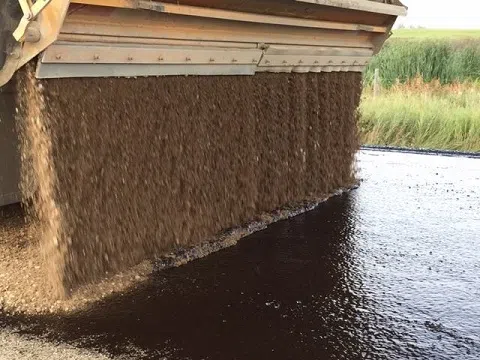
Seal Coats 101: Slowing to 60 km/hr Without Workers Present
If you are driving through a 60 km/hr construction zone with fresh oil or gravel on the road, but no workers are present, you are likely passing through a seal coat project. Seal coats are a cost-effective highway treatment that provides a waterproof surface, prolonging pavement life.
“Last year we heard from the public that some work zones were too long, leading to driver frustration,” Highways and Infrastructure Minister David Marit said. “We listened to feedback, and worked with the roadbuilding industry to shorten the work zone for seal coats that, in some cases, were 40 kilometres or longer down to a maximum of 15 kilometres.”
During the seal coating process, hot liquid asphalt is sprayed on the road; crushed gravel is then spread over the asphalt and packed down. The seal coat needs about 24 hours to cure. During this time, reduced speed limits remain in effect while workers may not be present. The loose gravel is swept off after curing, and may require several sweepings.
Seal coat treatments currently underway include a 13 km project on Highway 51 near Kelfield and an 8 km project on Highway 3, west of Melfort.


